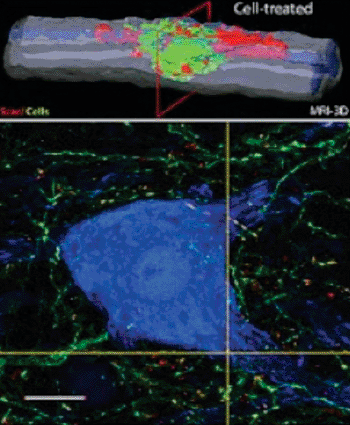Human Stem Cell Graft Stimulates Neuron Regeneration in Rats with Spinal Injury
By LabMedica International staff writers
Posted on 07 Jun 2013
Human neural stem cells injected into rats with acute spinal cord injury generated connections between the injected stem cells and surviving host neurons, which stimulated host neuron regeneration and partially replaced the neurons destroyed by the injury.Posted on 07 Jun 2013
Investigators at the University of California, San Diego School of Medicine (USA) worked with a model system comprising three-month-old female Sprague-Dawley rats with induced spinal compression injury. Three days postinjury, the animals were randomized and some received intraspinal injections of either human fetal spinal cord-derived neural stem cells (HSSC) or media-only, or did not receive an injection. All animals were immunosuppressed from the day of cell grafting and survived for eight weeks.
Results published in the May 28, 2013, online edition of the journal Stem Cell Research & Therapy revealed that the intraspinal grafting of HSSC in the injured animals led to a progressive and significant improvement in lower extremity paw placement, amelioration of spasticity, and normalization in thermal and tactile pain/escape thresholds at eight weeks post-grafting. Magnetic resonance imaging volume reconstruction and immunofluorescence analysis of grafted cell survival showed near complete injury-cavity-filling by grafted cells and development of putative synapses between grafted and host neurons.
















